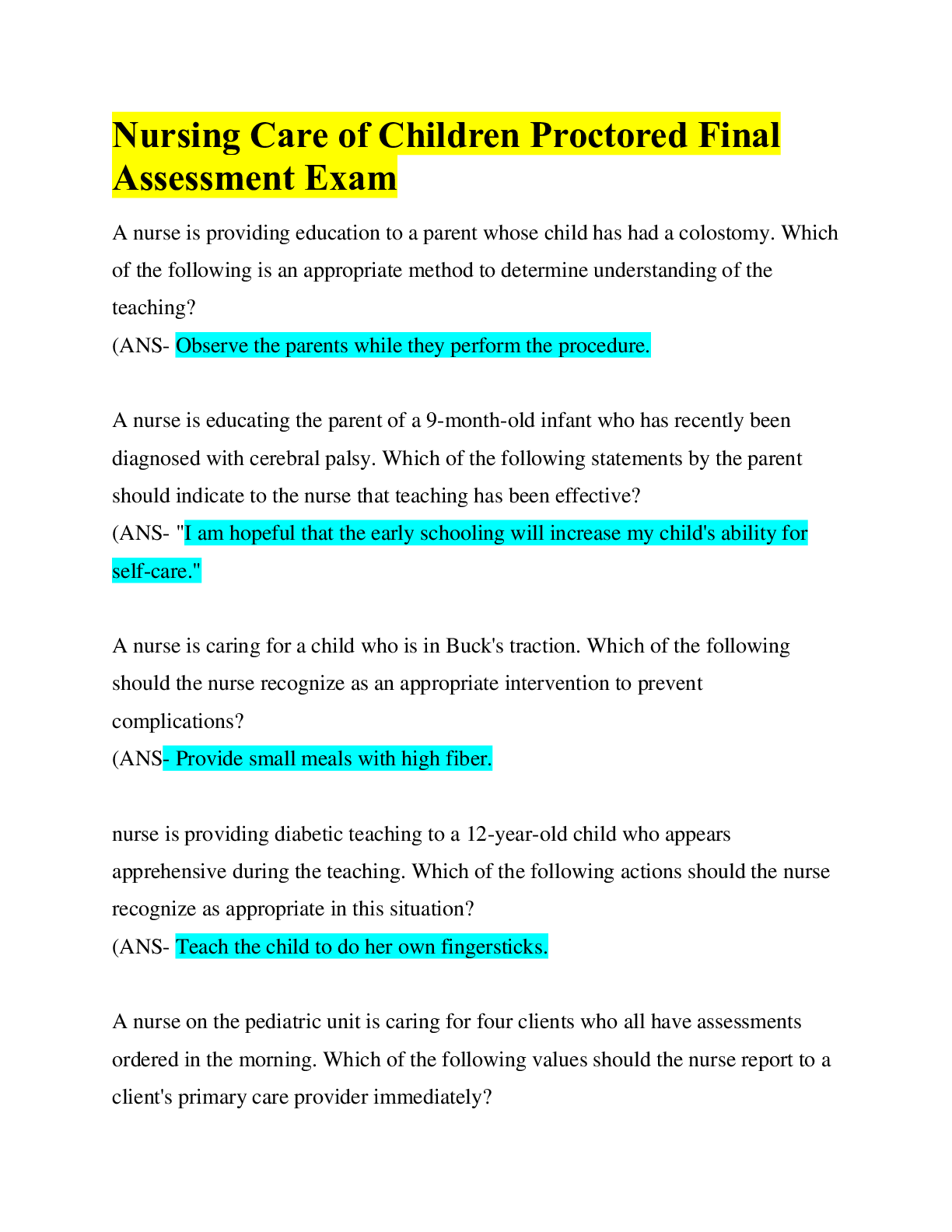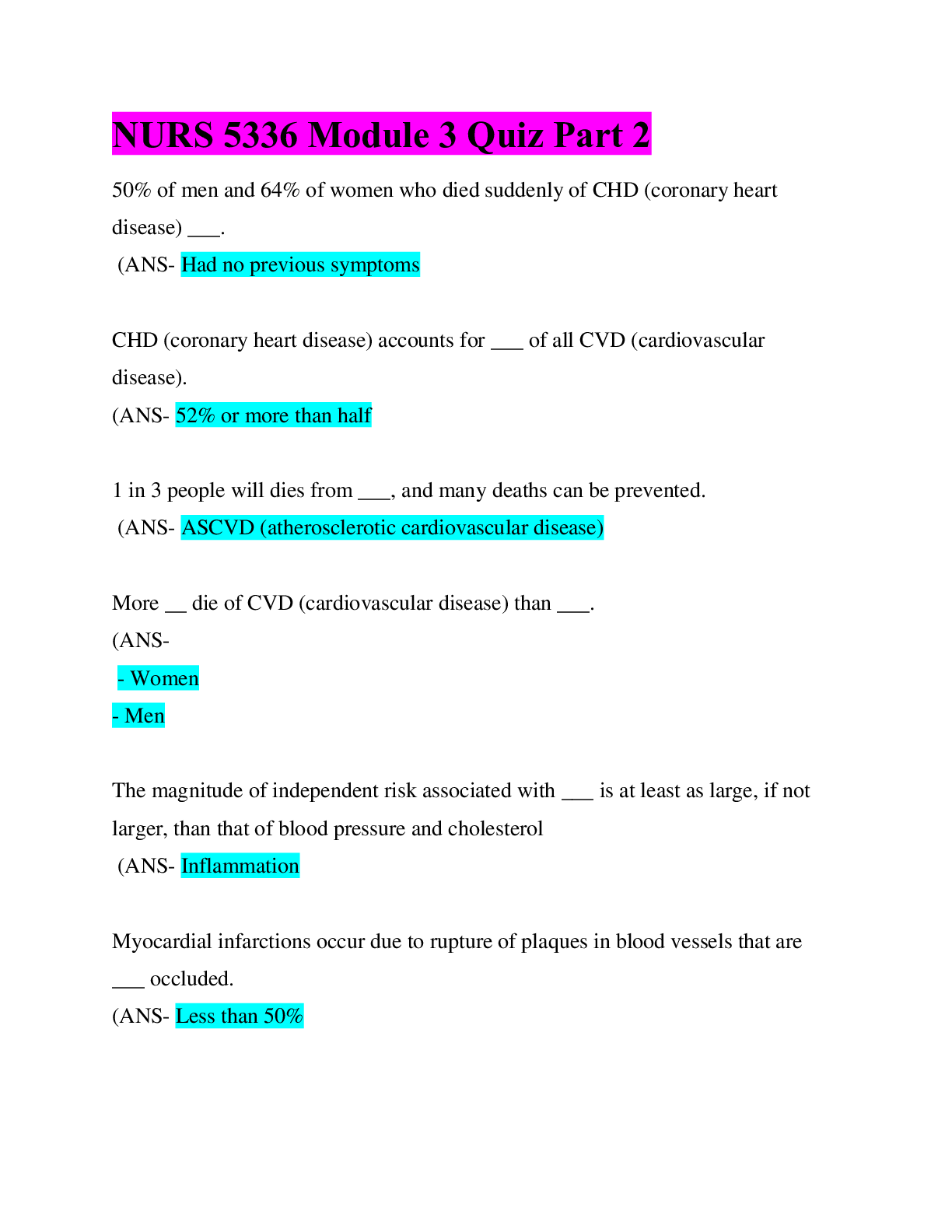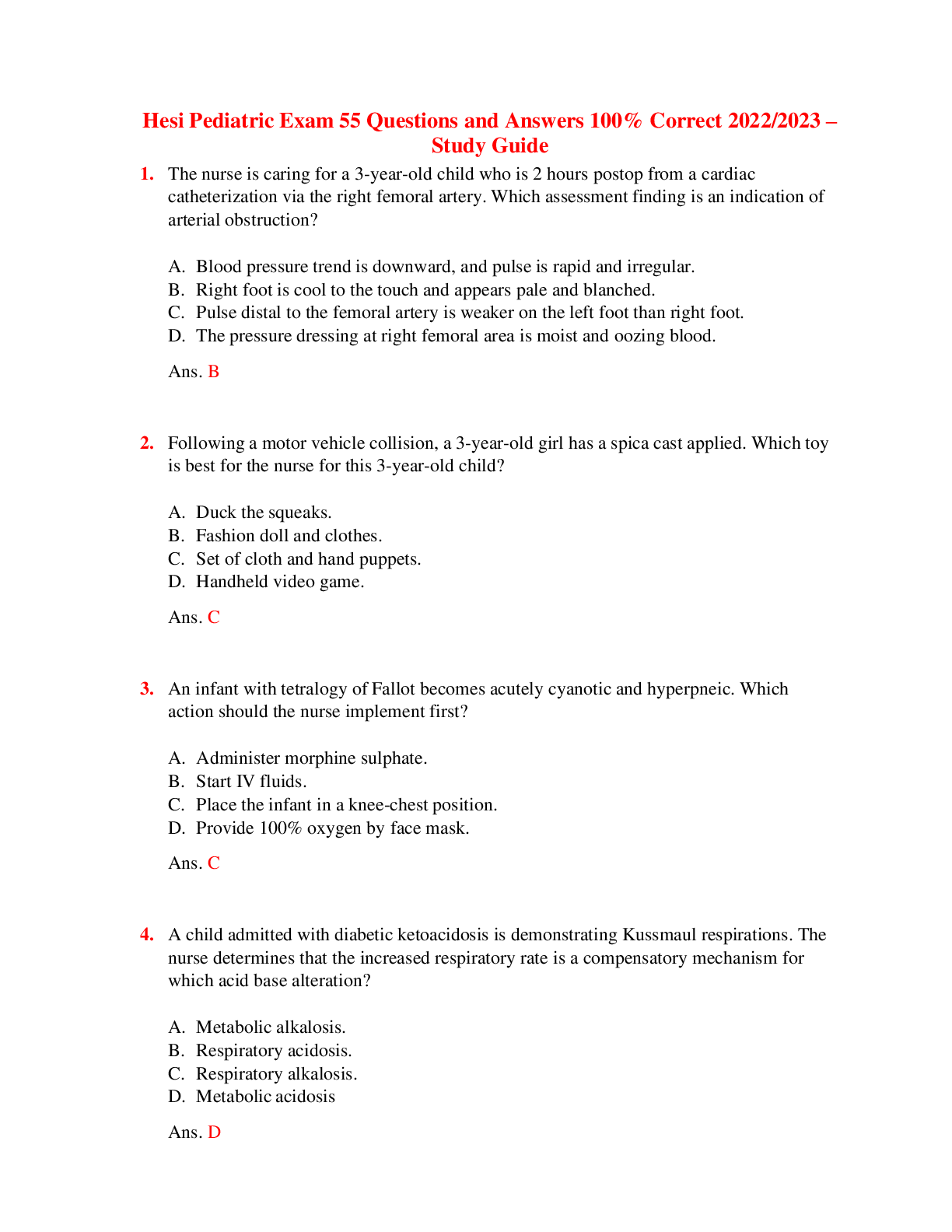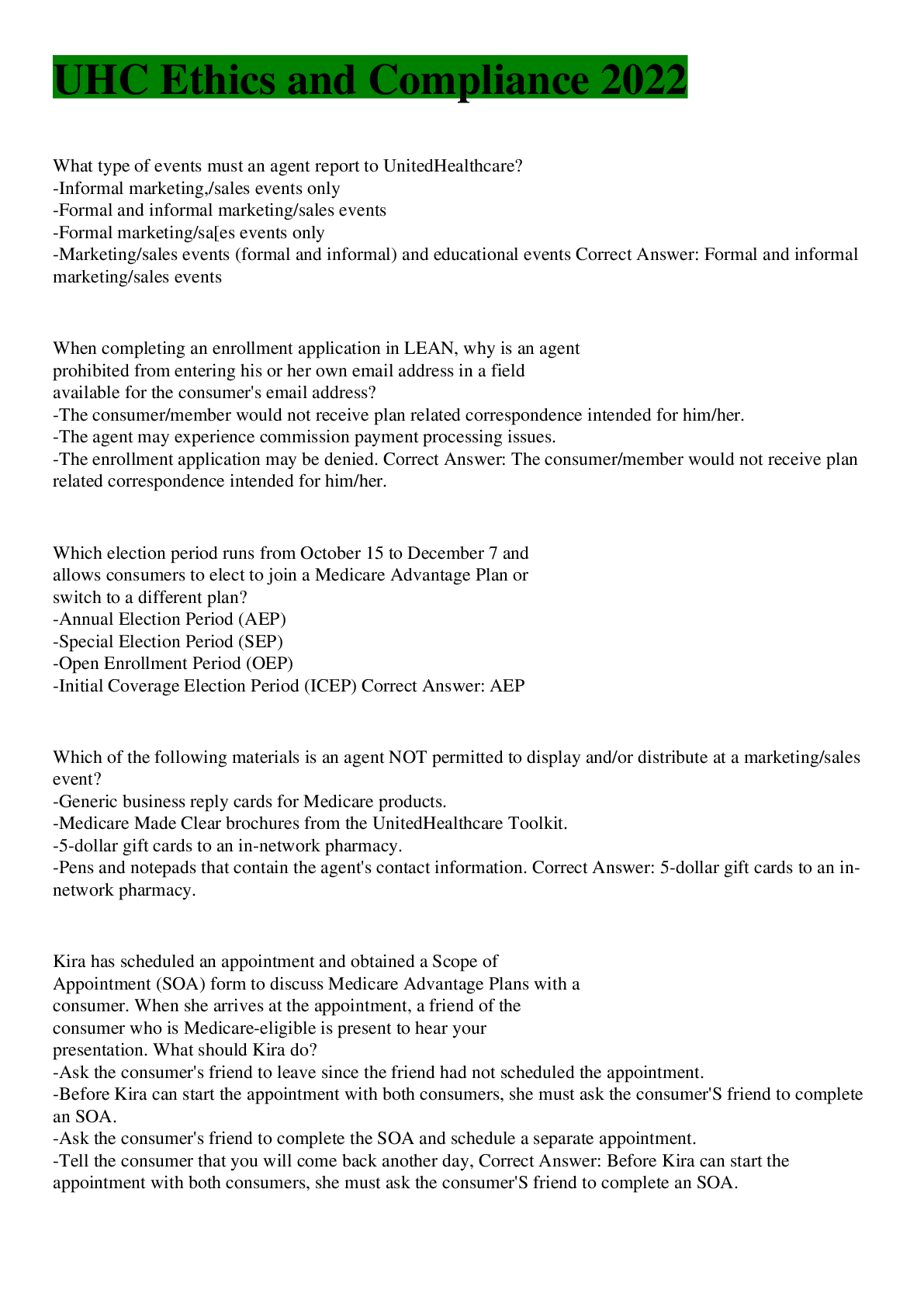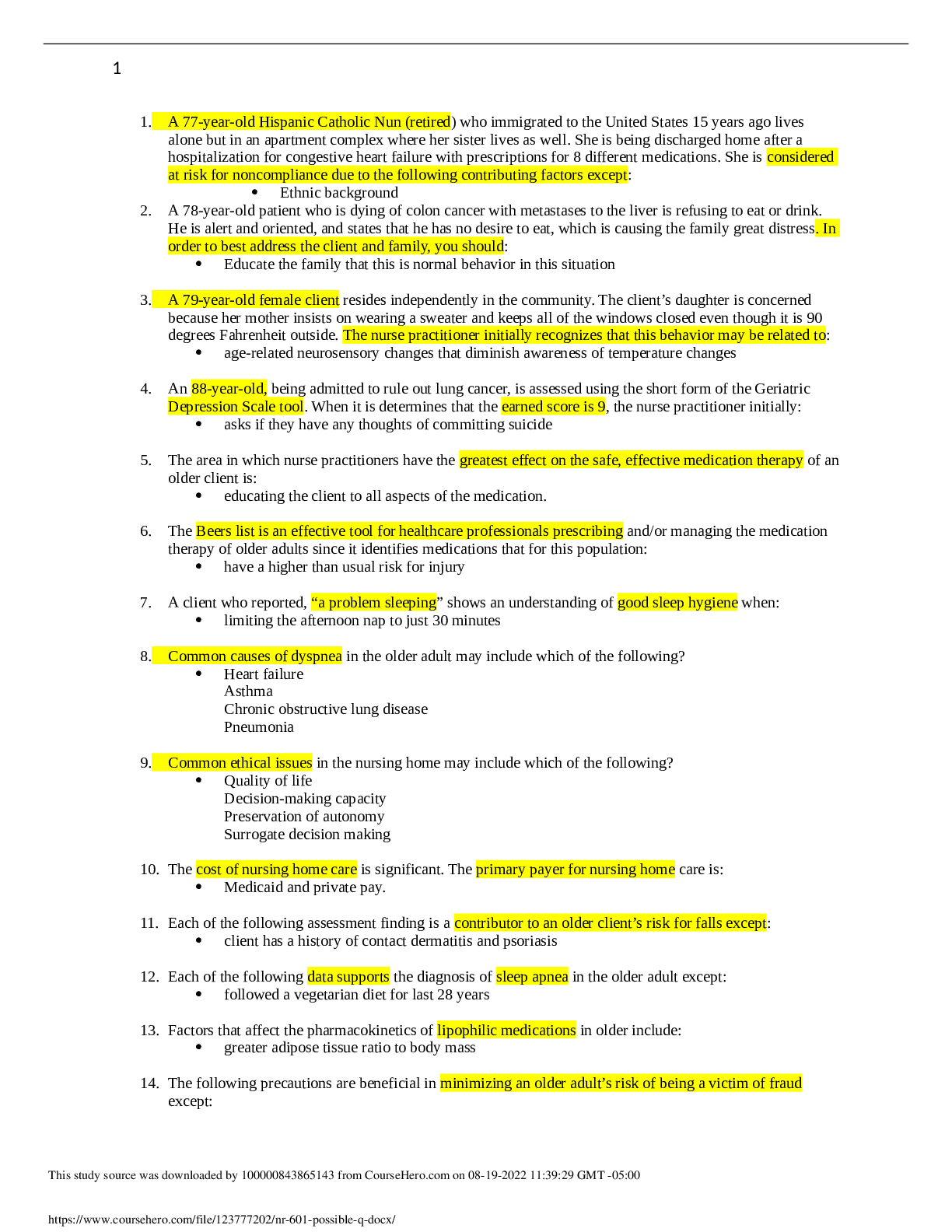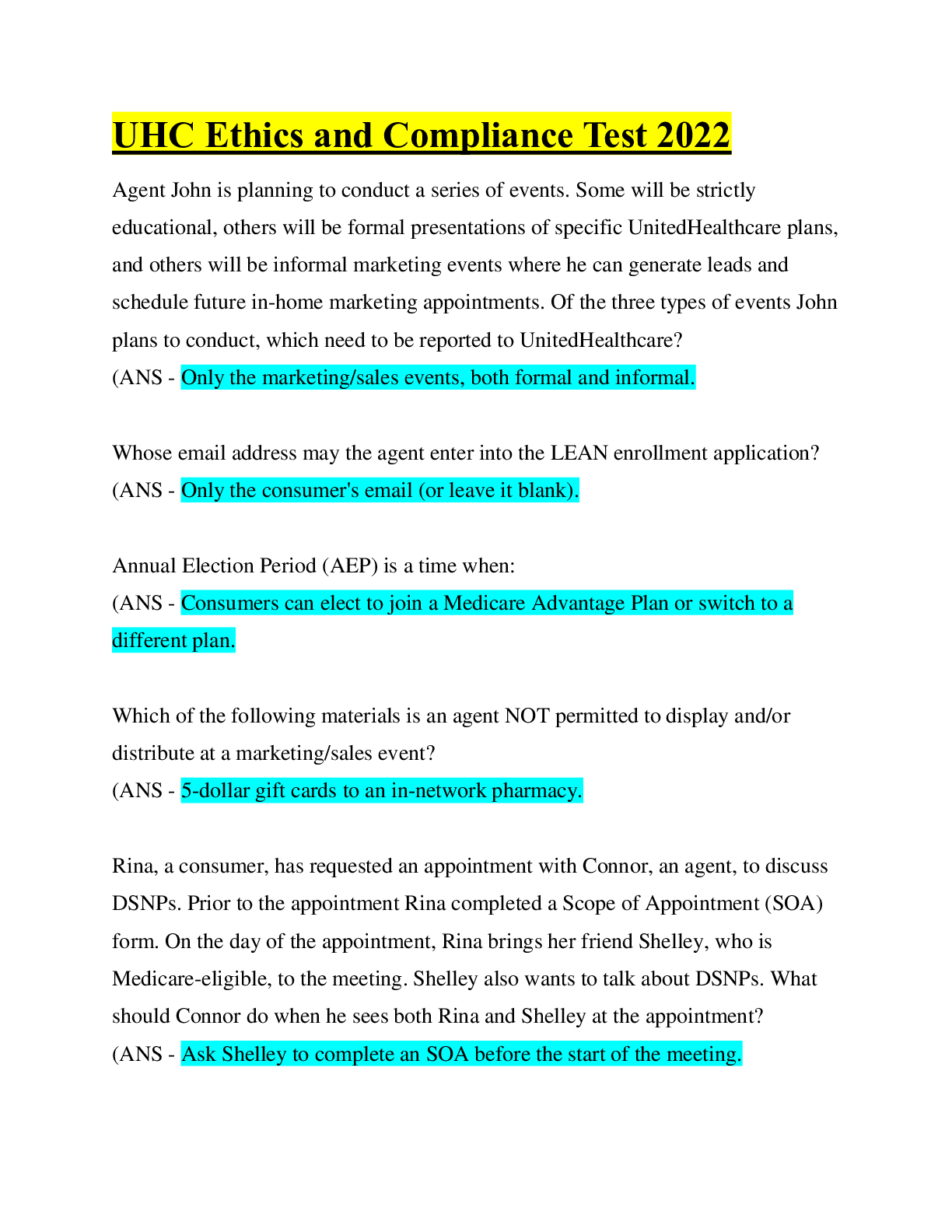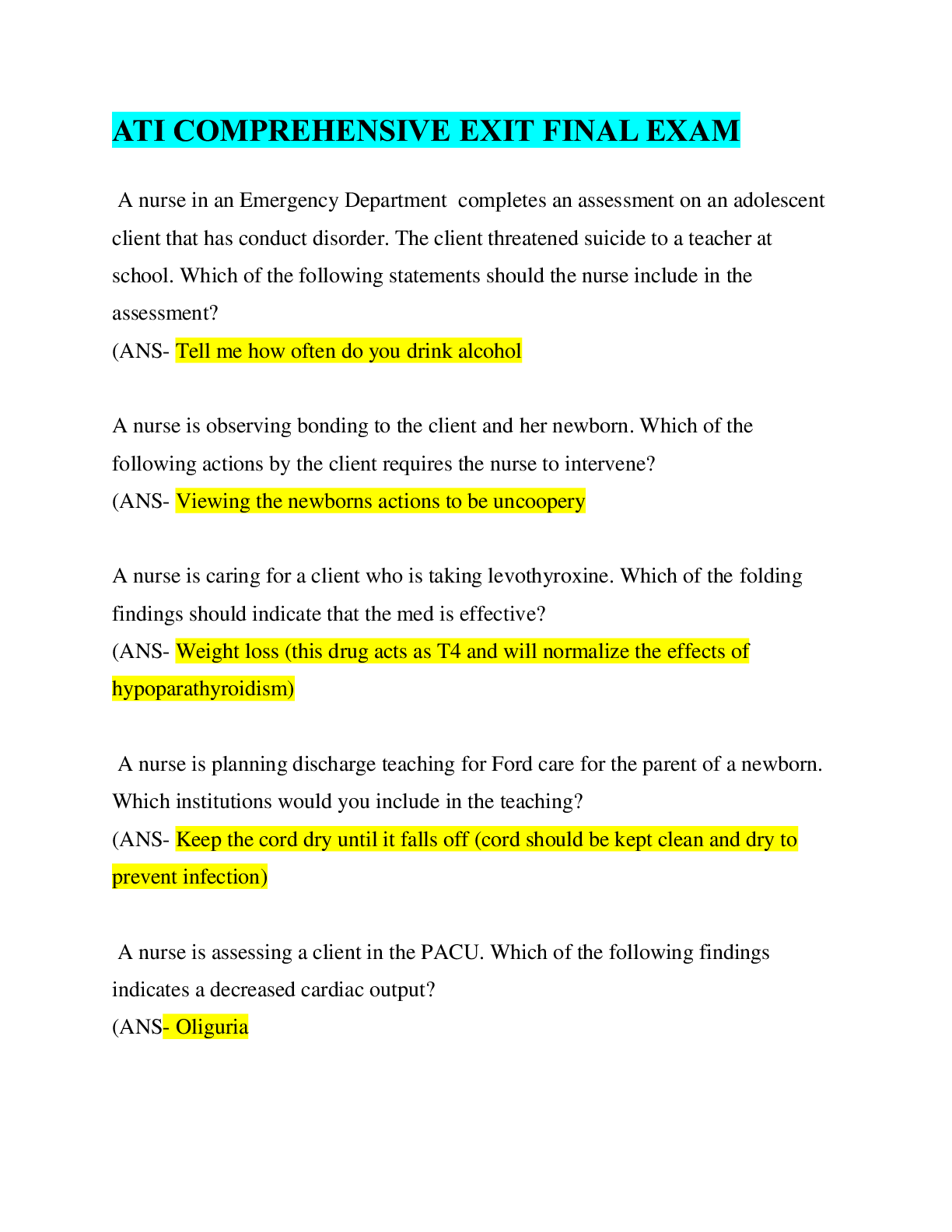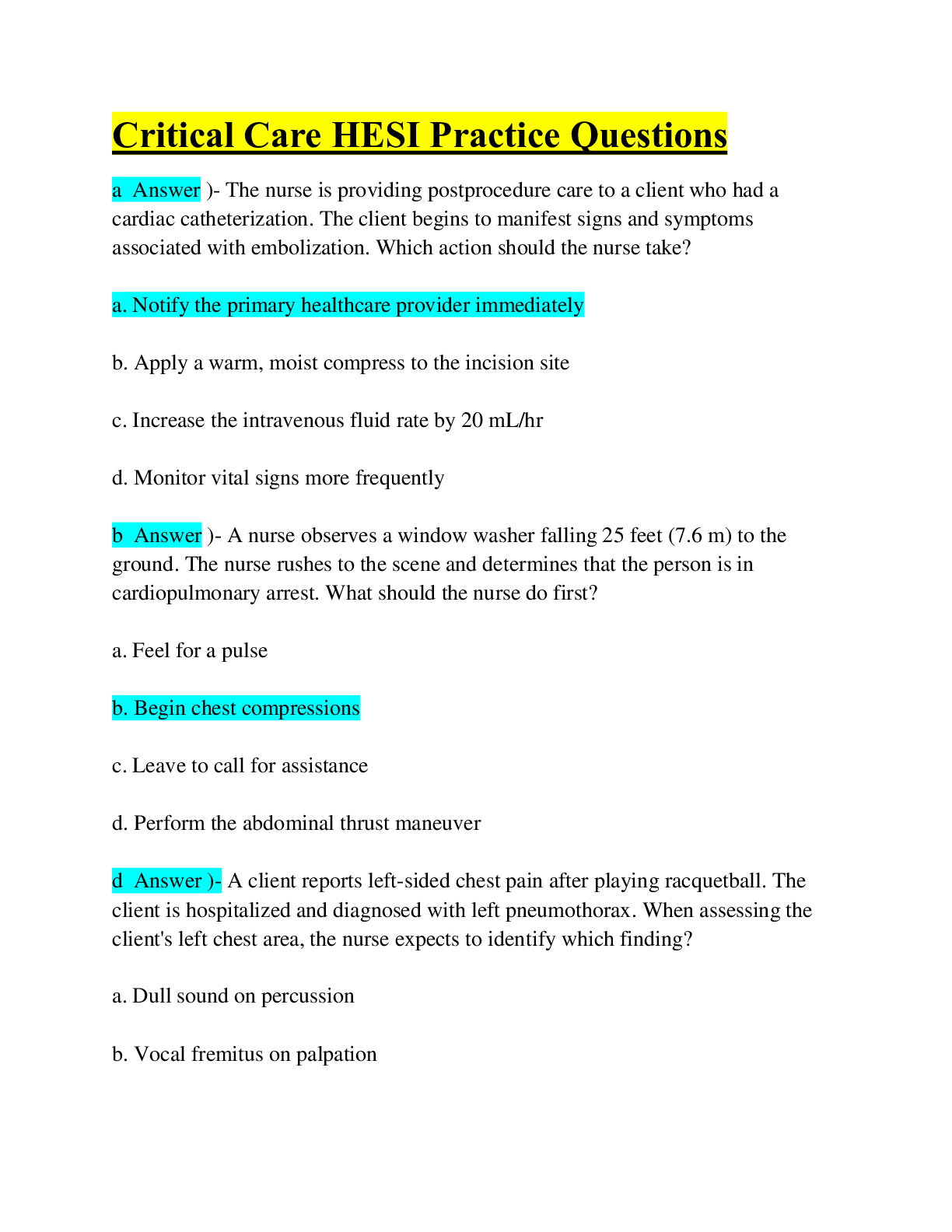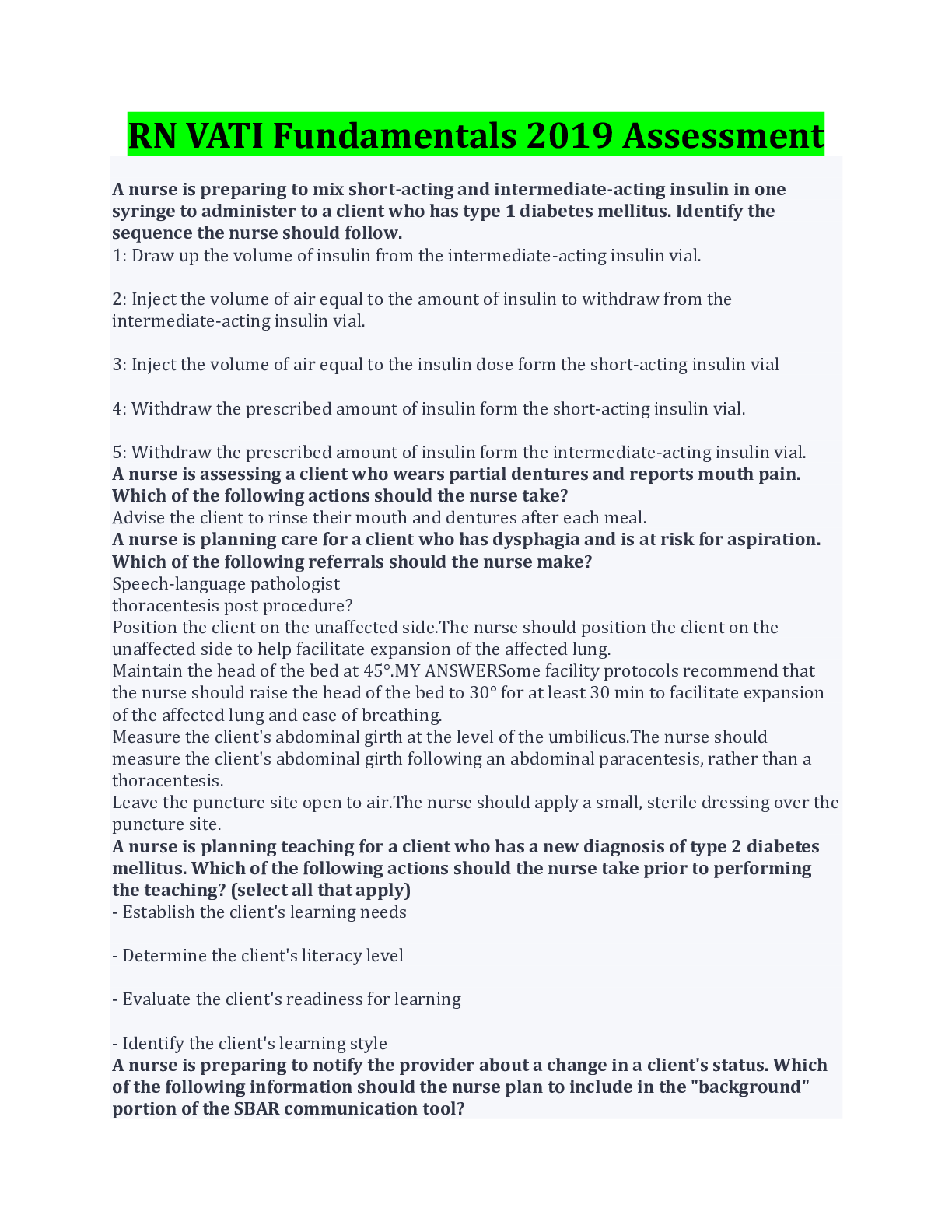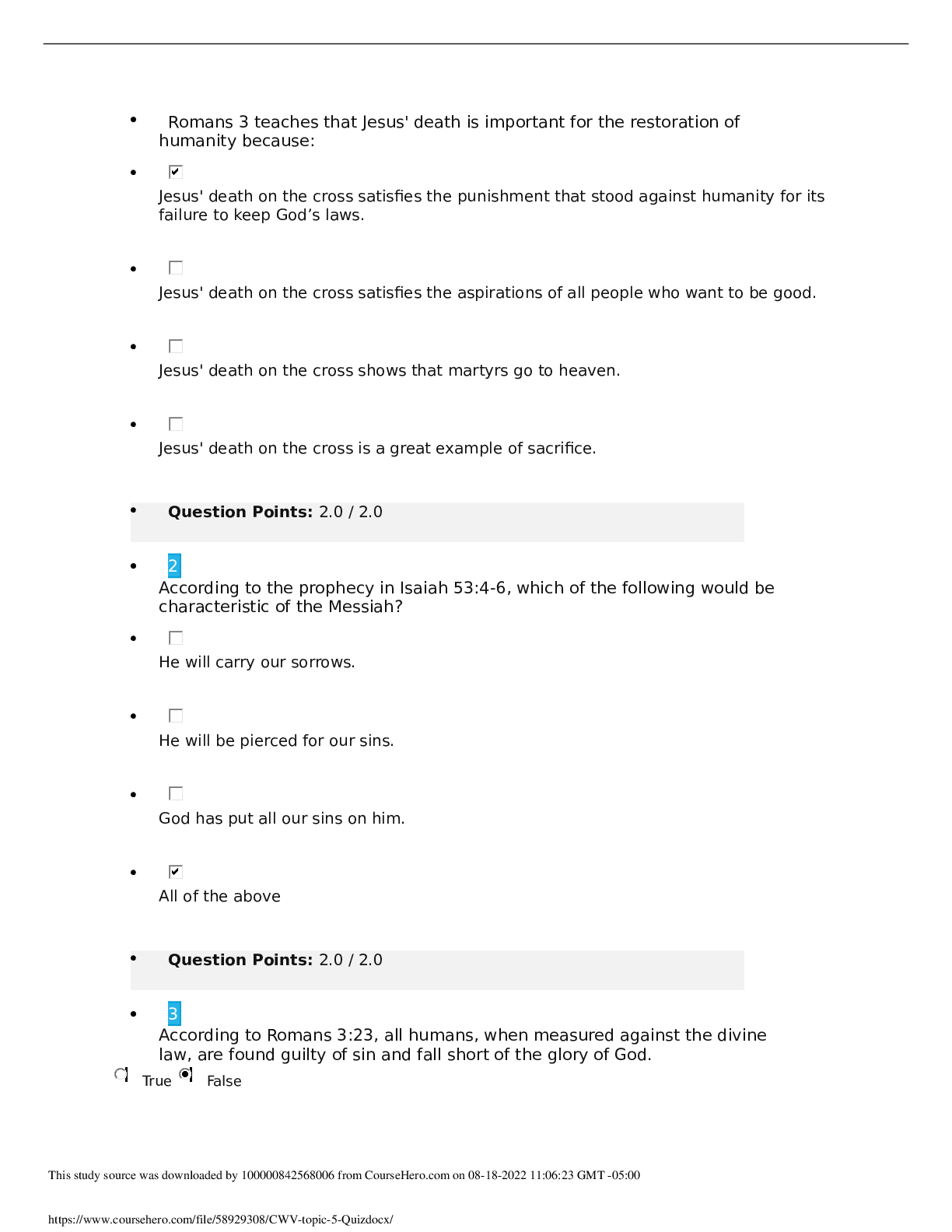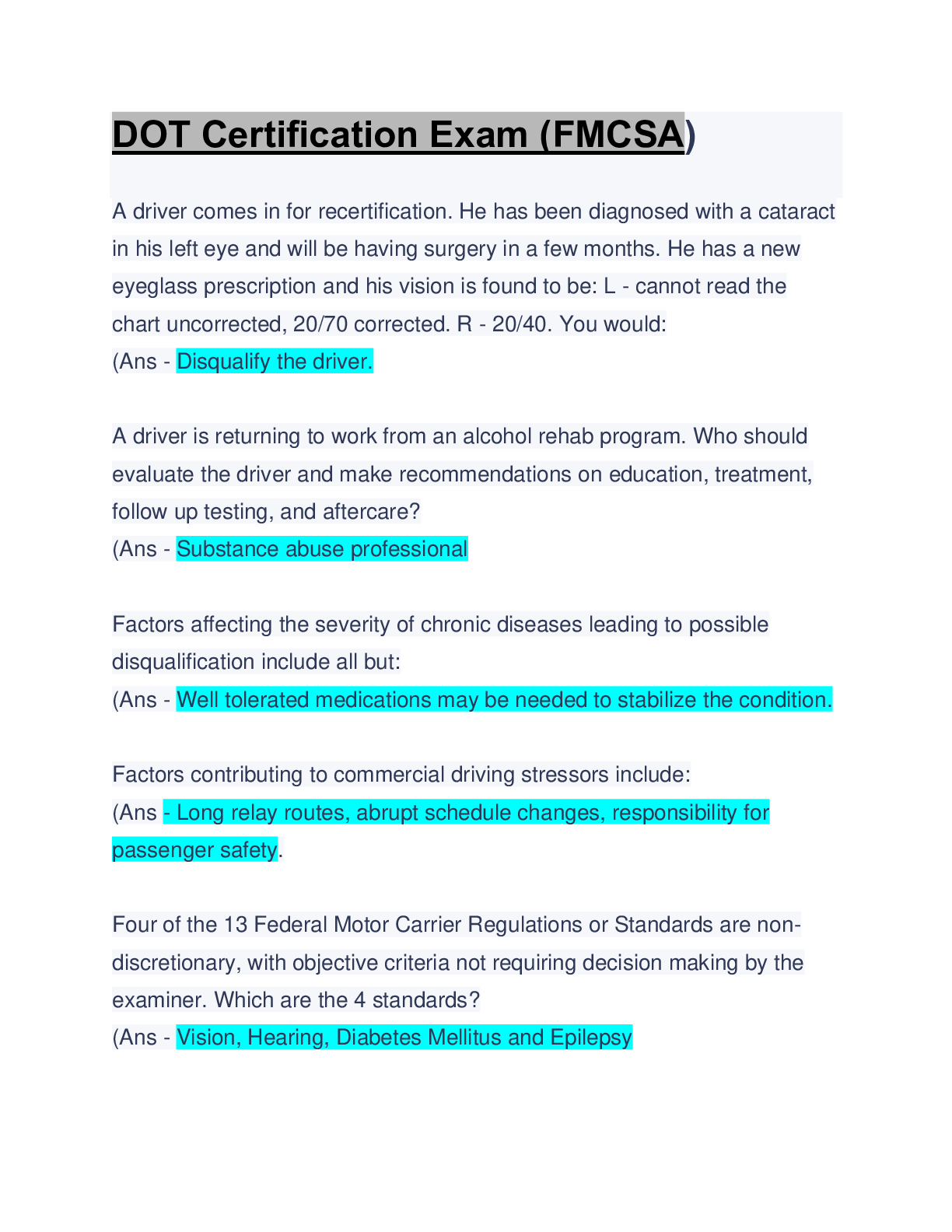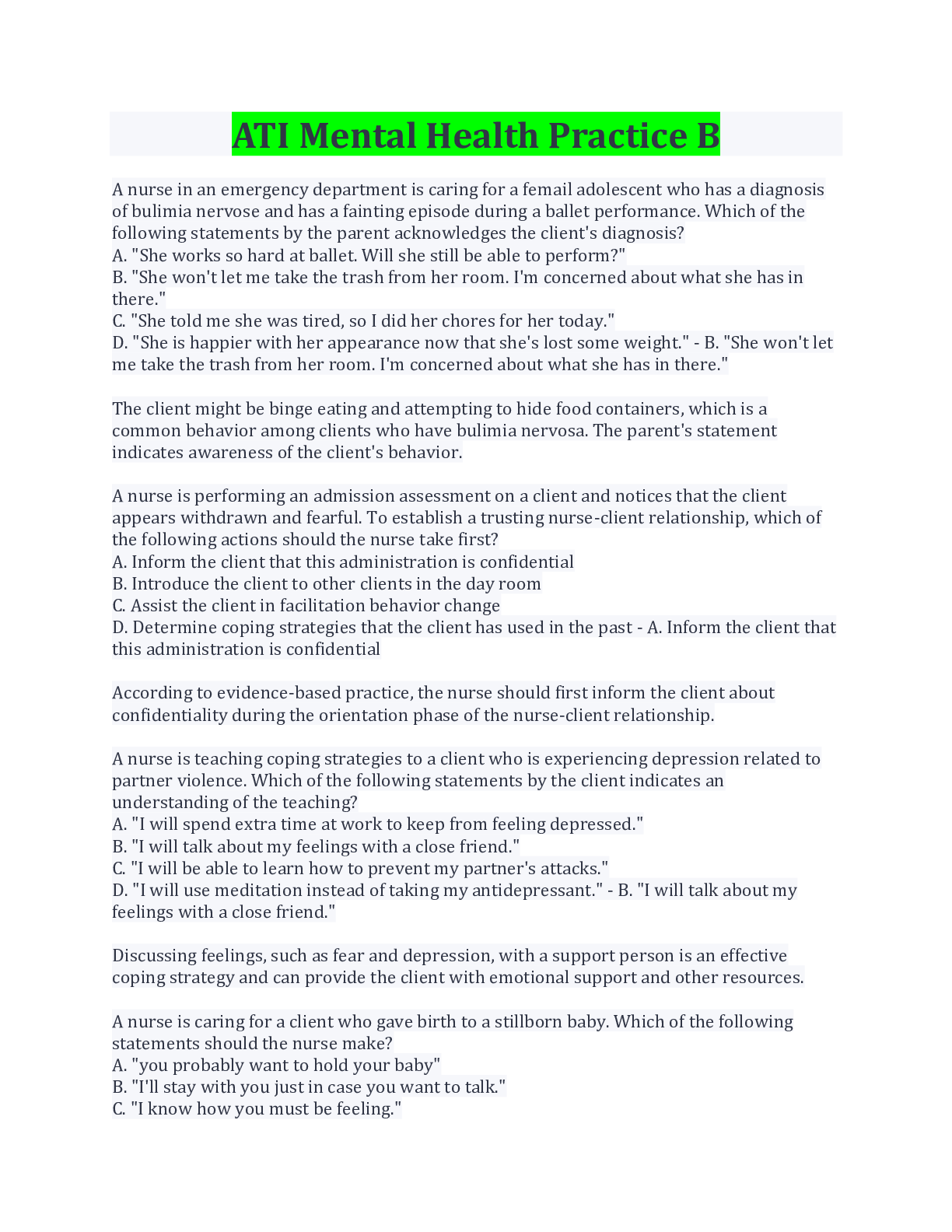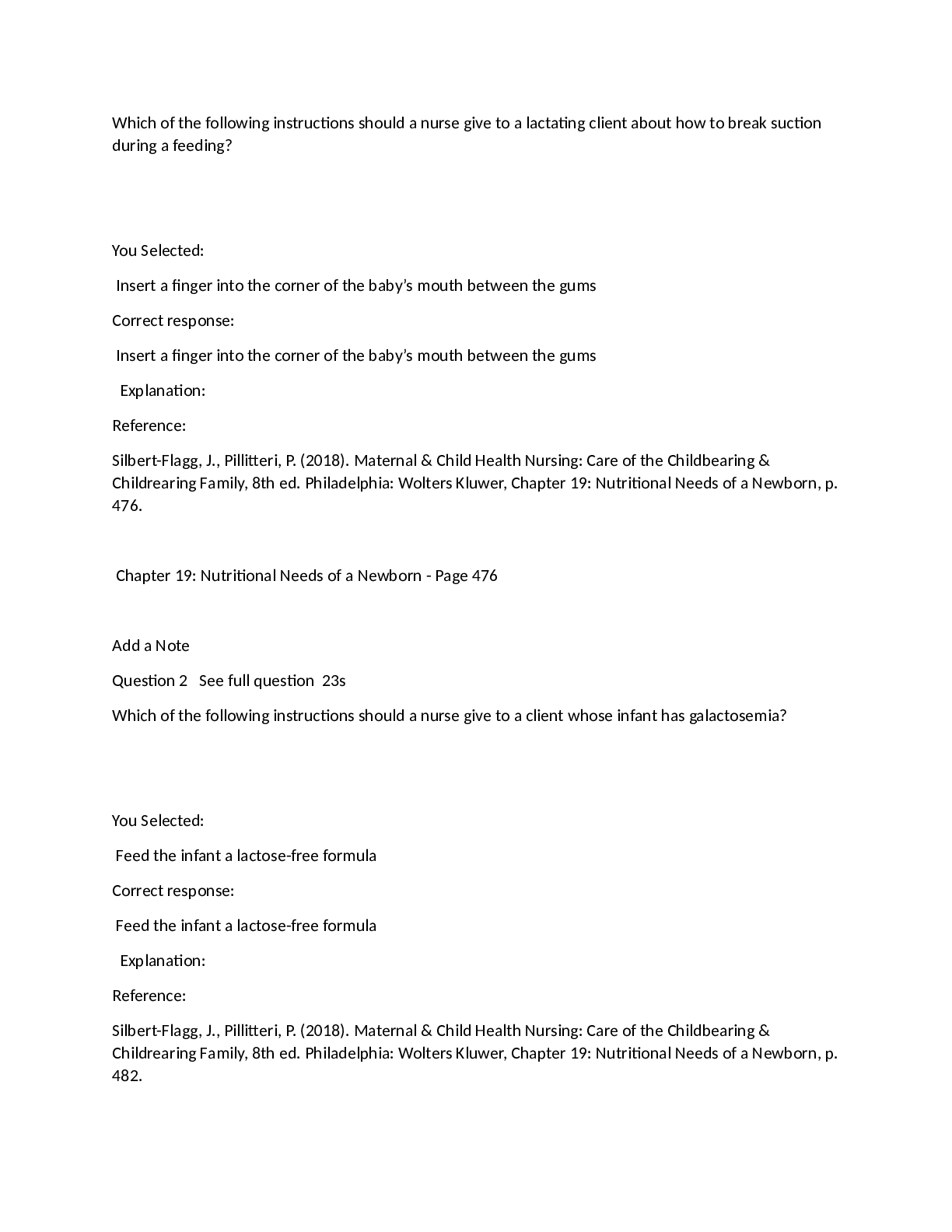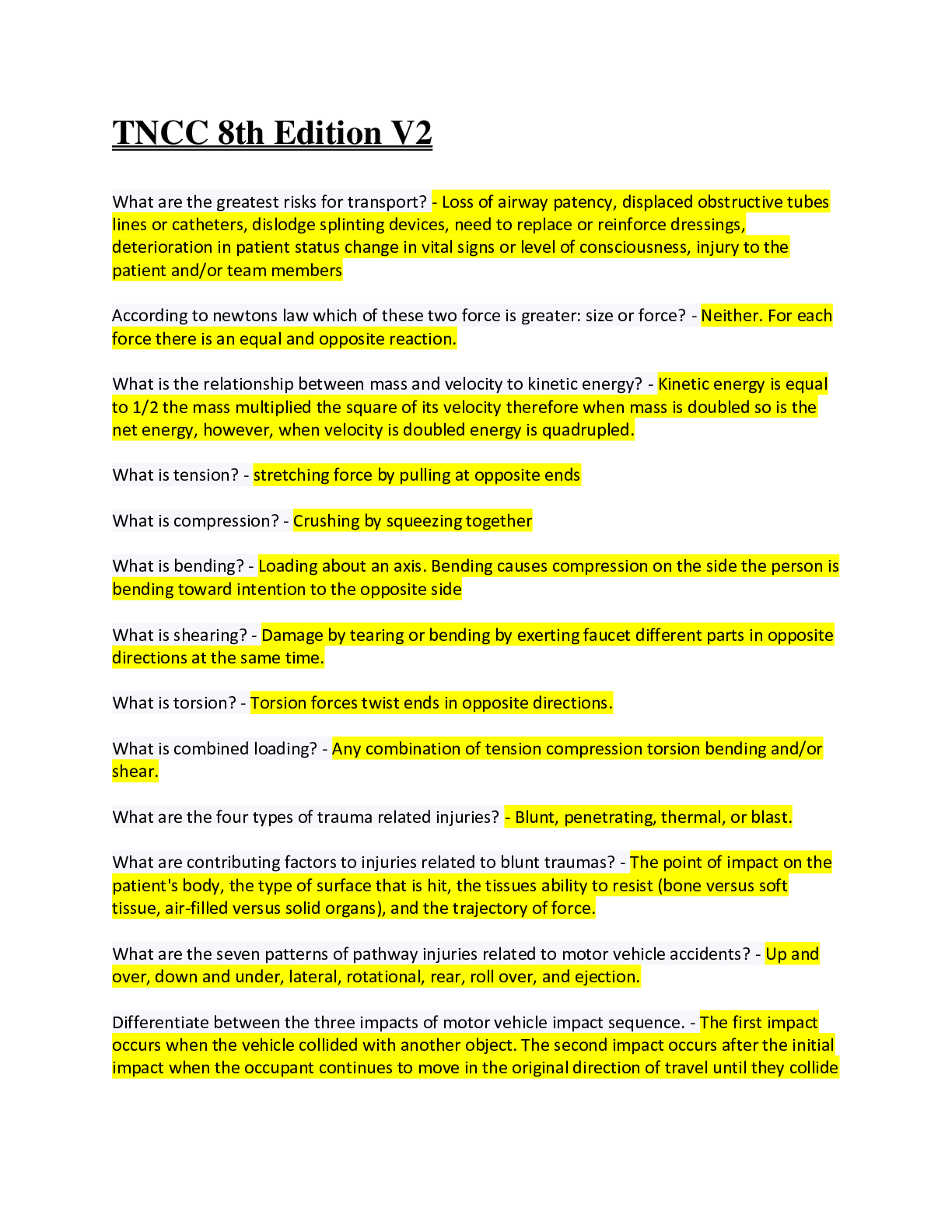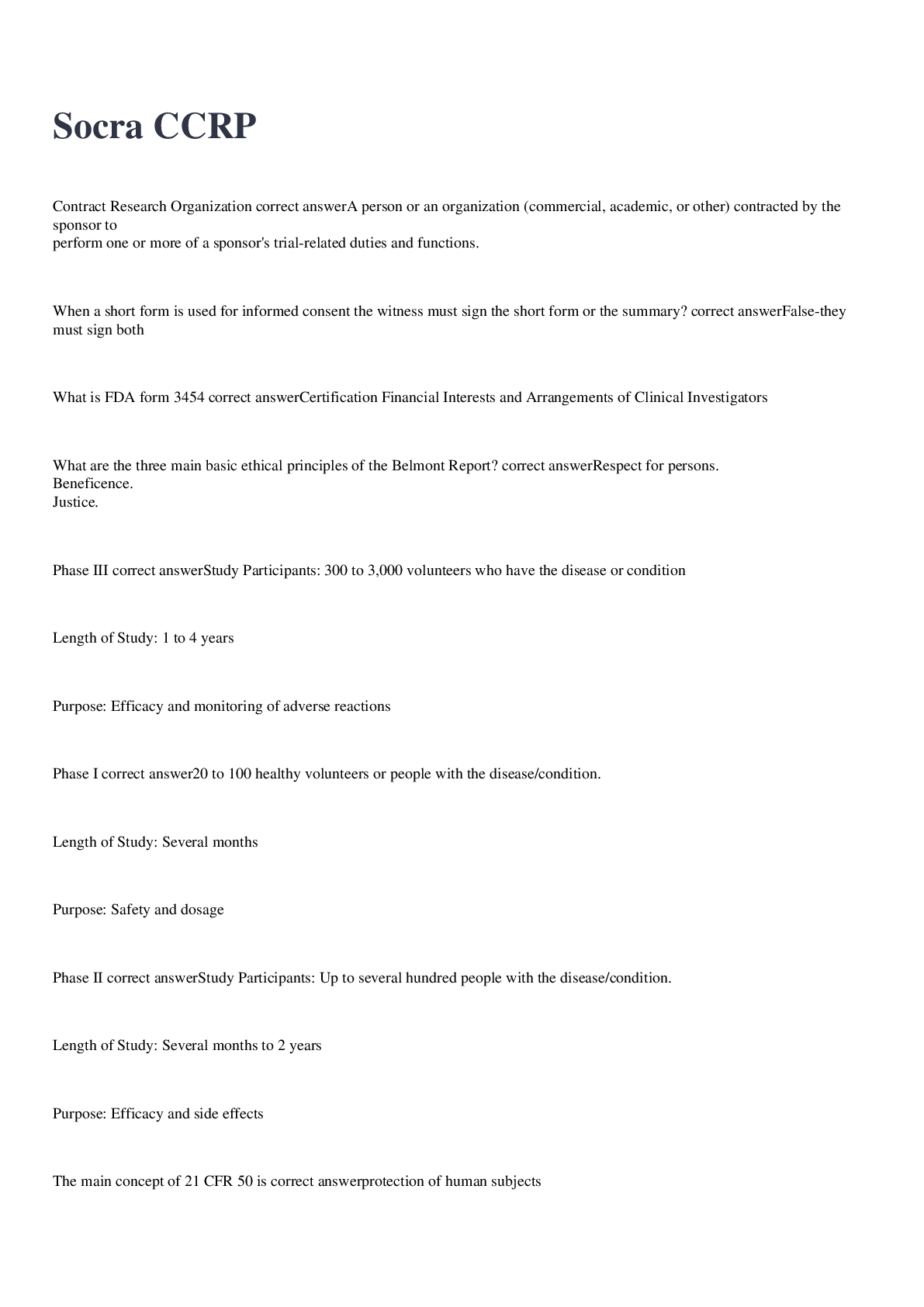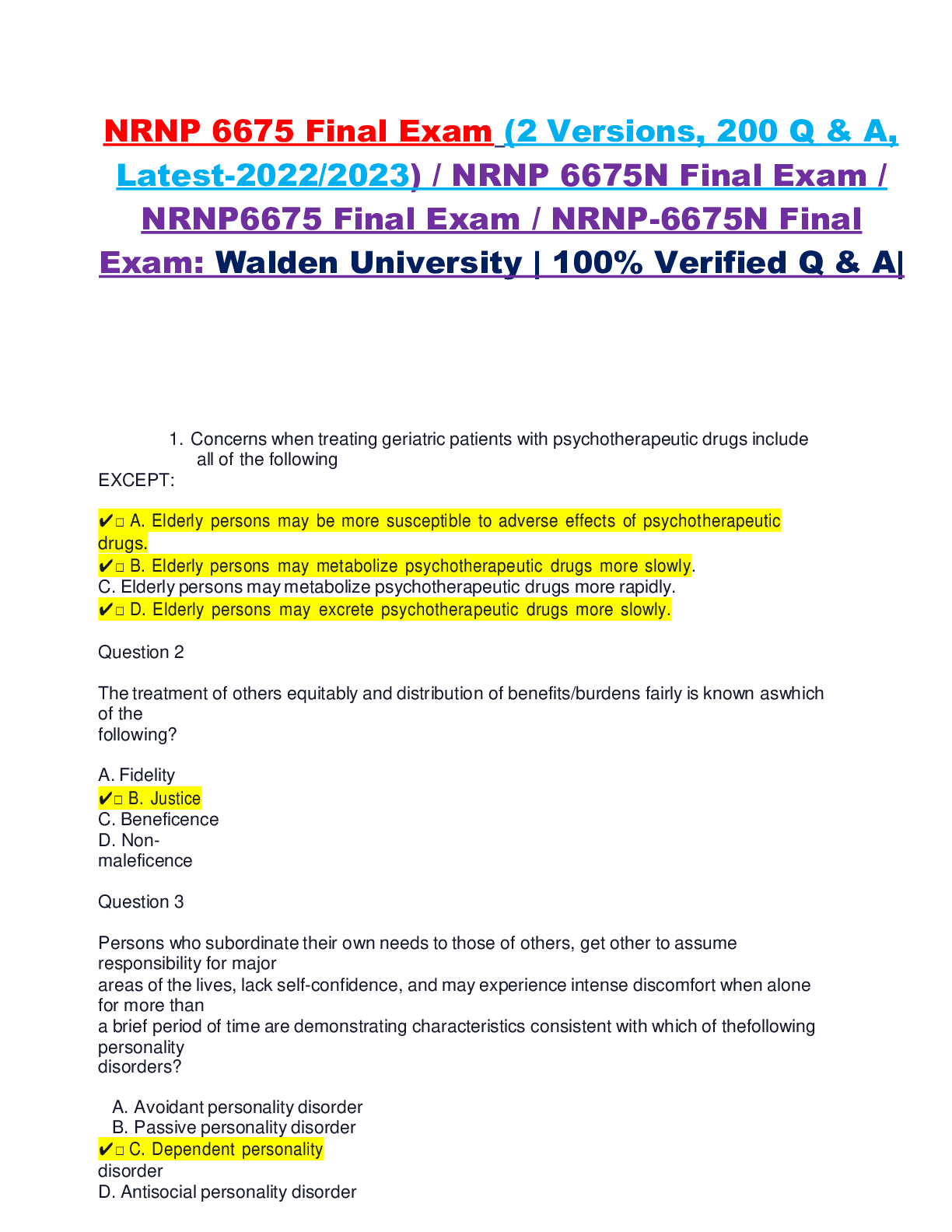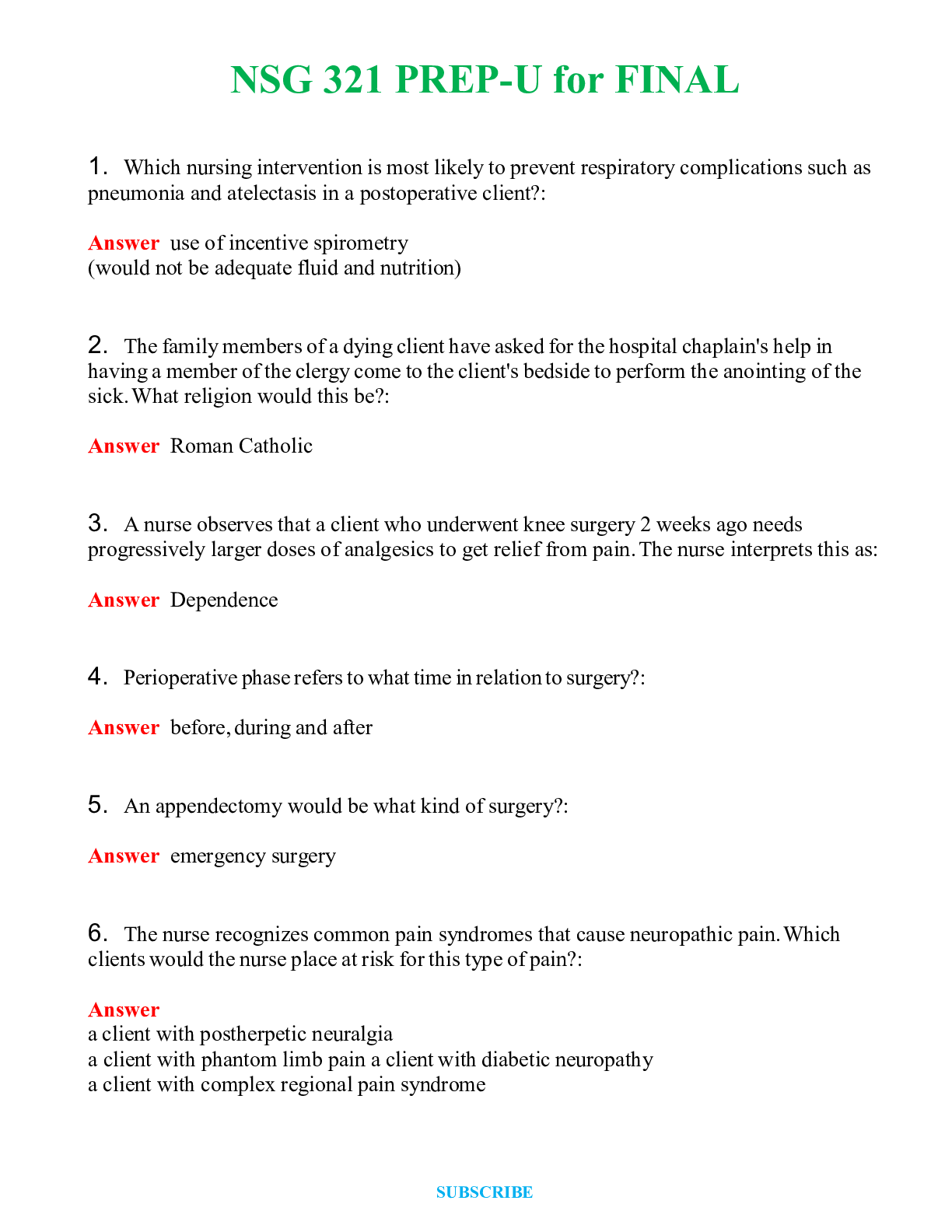Health Care > EXAM > HESI MODULE 8 Exam;Questions & Answers; complete A+Guide Solution with Rationales (All)
HESI MODULE 8 Exam;Questions & Answers; complete A+Guide Solution with Rationales
Document Content and Description Below
1. Questions 1. 1.ID: 9476967734 A nurse notes that the site of a client’s peripheral intravenous (IV) catheter is reddened, warm, painful, and slightly edematous near the insertion point of the... catheter. On the basis of this assessment, the nurse should take which action first? A. Remove the IV catheter Correct B. Slow the rate of infusion C. Notify the health care provider D. Check for loose catheter connections Rationale: Phlebitis is an inflammatory process in the vein. Phlebitis at an IV site may be indicated by client discomfort at the site or by redness, warmth, and swelling in the area of the catheter. The IV catheter should be removed and a new IV line inserted at a different site. Slowing the rate of infusion and checking for loose catheter connections are not correct responses. The health care provider would be notified if phlebitis were to occur, but this is not the initial action. Test-Taking Strategy: Note the strategic word, first. Focus on the data in the question. Eliminate slowing the rate of infusion and checking the connection, because they are comparable or alike in that they indicate continuation of IV therapy. Although the health care provider would be notified of this occurrence, the word “first” should direct you to select the option of removing the IV catheter. Review the signs of phlebitis and the actions to be taken when it occurs Level of Cognitive Ability: Applying Client Needs: Physiological Integrity Integrated Process: Nursing Process/Implementation Content Area: Intravenous Therapy Giddens Concepts: Clinical Judgment, Inflammation HESI Concepts: Clinical Decision-Making/Clinical Judgment, Inflammation Reference: Perry, A., Potter, P., & Ostendorf, W. (2014). Clinical nursing skills & techniques (8th ed., p. 707). St. Louis: Mosby. Awarded 1.0 points out of 1.0 possible points. 2. 2.ID: 9476963098 A nurse hangs a 500-mL bag of intravenous (IV) fluid for an assigned client. One hour later the client complains of chest tightness, is dyspneic and apprehensive, and has an irregular pulse. The IV bag has 100 mL remaining. Which action should the nurse take first? A. Remove the IV B. Sit the client up in bed C. Shut off the IV infusion Correct D. Slow the rate of infusion Rationale: The client’s symptoms are indicative of speed shock, which results from the rapid infusion of drugs or a bolus infusion. In this case, the nurse would note that 400 mL has infused over 60 minutes. The first action on the part of the nurse is shutting off the IV infusion. Other actions may follow in rapid sequence: The nurse may elevate the head of the bed to aid the client’s breathing and then immediately notify the health care provider. Slowing the infusion rate is inappropriate because the client will continue to receive fluid. The IV does not need to be removed. It may be needed to manage the complication. Test-Taking Strategy: Note the question contains the strategic word “first.” Recognizing the signs of speed shock and recalling the appropriate interventions should also direct you to the option of shutting off the IV infusion. Review the initial nursing actions for speed shock Level of Cognitive Ability: Applying Client Needs: Physiological Integrity Integrated Process: Nursing Process/Implementation Content Area: Critical Care Giddens Concepts: Fluid and Electrolytes, Perfusion HESI Concepts: Fluid and Electrolytes, Perfusion Reference: Ignatavicius, D., & Workman, M. (2013). Medical-surgical nursing: Patient-centered collaborative care. (7th ed., p. 230). St. Louis: Saunders. Awarded 1.0 points out of 1.0 possible points. 3. 3.ID: 9476961248 A nurse discontinues an infusion of a unit of packed red blood cells (RBCs) because the client is experiencing a transfusion reaction. After discontinuing the transfusion, which action should the nurse take next? A. Remove the IV catheter B. Contact the health care provider Correct C. Change the solution to 5% dextrose in water D. Obtain a culture of the tip of the catheter device removed from the client Rationale: If the nurse suspects a transfusion reaction, the transfusion is stopped and normal saline solution infused at a keep-vein-open rate pending further health care provider prescriptions. The nurse then contacts the health care provider.. Dextrose in water is not used, because it may cause clotting or hemolysis of blood cells. Normal saline solution is the only type of IV fluid that is compatible with blood. The nurse would not remove the IV catheter, because then there would be no IV access route through which to treat the reaction. There is no reason to obtain a culture of the catheter tip; this is done when an infection is suspected. Test-Taking Strategy: Note the strategic word “next.” Knowing that the IV should not be removed will assist you in the elimination process. Recalling that normal saline solution is the only type of IV fluid that is compatible with blood will also help you answer correctly. To select from the remaining options, note that infection is not the concern; this will help you eliminate the option of obtaining a culture of the catheter tip. Review care of the client experiencing a transfusion reaction Level of Cognitive Ability: Applying Client Needs: Physiological Integrity [Show More]
Last updated: 1 year ago
Preview 1 out of 65 pages
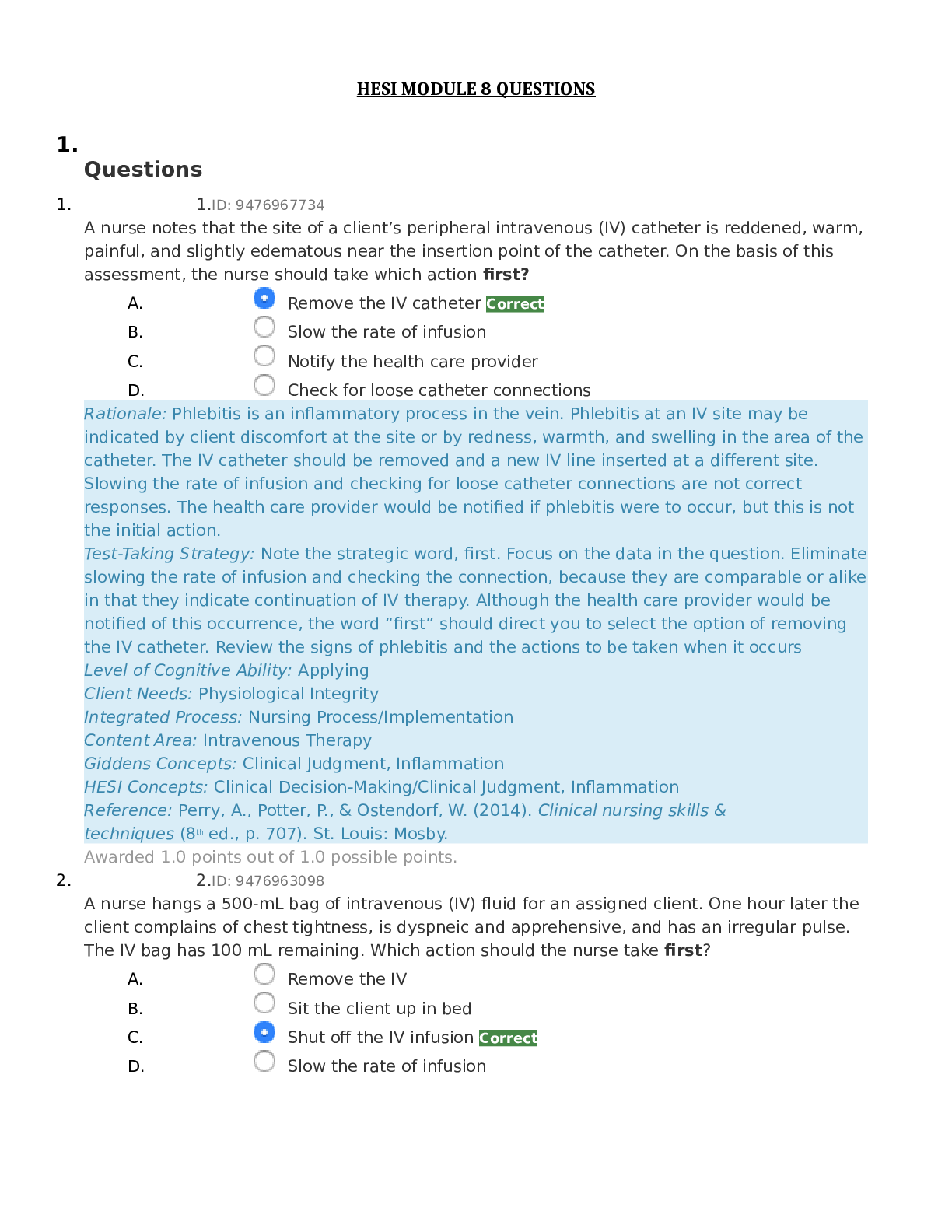
Reviews( 0 )
Document information
Connected school, study & course
About the document
Uploaded On
Sep 30, 2022
Number of pages
65
Written in
Additional information
This document has been written for:
Uploaded
Sep 30, 2022
Downloads
0
Views
26



